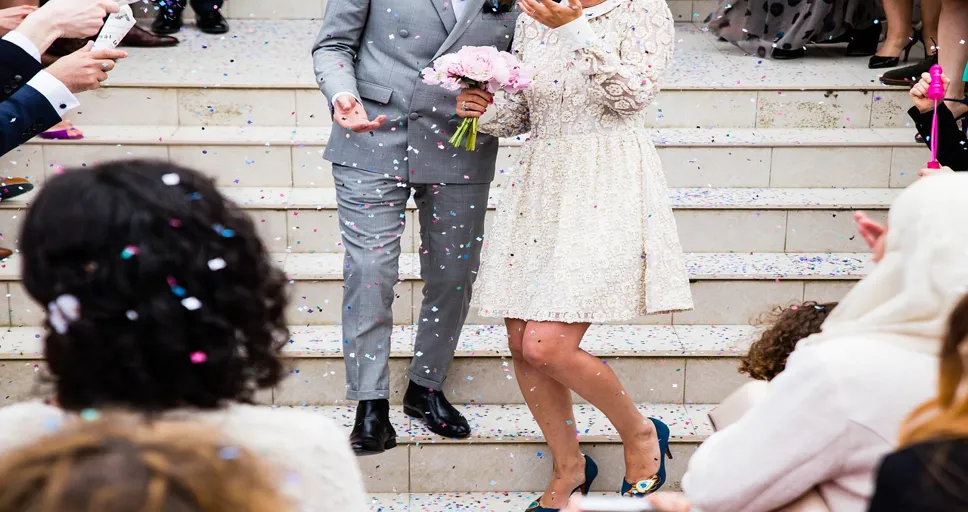Contents
- 1 How Often Should You See Someone You’re Casually Dating? Understanding the Dynamics of Casual Dating
- 2 Setting Expectations Early On
- 3 The Importance of Personal Space
- 4 Communicating Your Needs Effectively
- 5 Balancing Time Together and Apart
- 6 Signs You Might Be Seeing Each Other Too Much
- 7 Adjusting the Frequency as Your Relationship Evolves
- 8 Frequently Asked Questions
- 8.1 How often should you see someone casually dating?
- 8.2 How do you know when it’s time to end a casual relationship?
- 8.3 How often should you talk when casually dating?
- 8.4 How often do you talk to someone you’re casually dating?
- 8.5 How often should I see the person I’m dating?
- 8.6 When to stop casual dating?
- 8.7 How often do you talk to someone you just started dating?
- 8.8 When to go from casual dating to exclusive?
- 8.9 How long should casual dating last?
- 8.10 How often should you talk in a casual relationship?
- 8.11 How long do people usually casually date?
- 9 Conclusion
- 10 Recommended Authors For Further Reading
Navigating the waters of modern romance, especially determining how often should you see someone you’re casually dating, can be both exciting and confusing. This initial phase of dating doesn’t come with hard and fast rules, making it crucial for individuals to find a balance that aligns with their personal expectations and lifestyle. The answer varies widely depending on individual circumstances, including work schedules, personal habits, and emotional needs. This article aims to explore various aspects of casual dating, from setting realistic expectations to respecting personal space, ensuring that both parties feel comfortable with the frequency of their meetings. Understanding these dynamics can help you build a casual relationship that is enjoyable and stress-free.
- Assess Personal Preferences: Consider your own and your partner’s lifestyle, work, and social commitments to determine a manageable frequency of meetings.
- Open Communication: Early in the dating process, discuss expectations about how often you’ll see each other to prevent misunderstandings.
- Set Clear Expectations: Be honest about what you’re looking for in terms of frequency and type of interaction.
- Be Flexible: Allow room for spontaneity and changes in plans to keep the dating experience fun and stress-free.
- Evaluate Compatibility: Ensure both parties are comfortable with the agreed frequency, maintaining a balance that suits both.
- Adapt Over Time: Adjust the frequency of meetings as the relationship evolves, ensuring it remains in line with both partners’ comfort levels.
How Often Should You See Someone You’re Casually Dating? Understanding the Dynamics of Casual Dating
Deciding how often to see someone you’re casually dating is an art that balances personal freedom with shared enjoyment. This delicate balance affects not only how each person feels about the other but also how they perceive the relationship’s potential future. Casual dating should offer a fun, low-pressure experience without the commitments typically associated with more serious relationships. However, the frequency of your meetings can significantly influence the development of your connection.
Personal Preferences and Lifestyle Considerations
The right frequency of dates depends largely on individual preferences and lifestyles. Some people thrive on daily interactions, while others may find such frequency overwhelming, preferring to meet once a week or even less frequently. It’s important to assess how much time you realistically can and want to dedicate to a new relationship. Work schedules, social obligations, and personal downtime all play critical roles in this decision. The key is to strike a balance that keeps the relationship exciting without making it feel like a chore or obligation.
Communication and Expectation Setting
Early in the dating process, it’s vital to communicate openly about expectations regarding the frequency of meetings. This conversation can help set the tone for the relationship and prevent potential misunderstandings. If one person expects daily texts or calls and the other thinks a few times a week is adequate, it’s easy to see how frustrations could build. A frank discussion about your dating rhythms can pave the way for a more satisfying and stress-free interaction.
Assessing Relationship Progression
As the relationship evolves, the frequency of your meetings might naturally increase as you become more comfortable with each other. It’s essential, however, to keep assessing whether the increased intimacy aligns with your intentions for the relationship. Casual dating is often about enjoying the moment without serious commitments, so it’s important to ensure that both parties are on the same page.
Flexibility and Spontaneity
Incorporating a level of flexibility and spontaneity can help keep the relationship fresh and exciting. While it’s beneficial to have a general understanding of each other’s expectations, being too rigid can dampen the fun of dating. Allowing for spontaneous plans or last-minute changes can add a thrilling element to your meetings, keeping the connection lively and unpredictable.
Navigating the dynamics of how often should you see someone you’re casually dating involves a blend of personal preference, communication, and flexibility. By understanding and respecting each other’s space and expectations, you can enjoy the journey of casual dating while exploring where the connection might lead, all without unnecessary pressure or unrealistic demands.
Setting Expectations Early On
Setting clear expectations early on in any dating scenario is crucial, but it becomes particularly important when figuring out how often should you see someone you’re casually dating. This early stage negotiation sets the groundwork for the relationship’s communication style and can help prevent misunderstandings and disappointments that might arise from mismatched expectations.
The Role of Honest Communication
From the outset, it is essential to be open and honest about what you’re looking for in the casual dating experience. Are you expecting to see each other once a week, or are more frequent encounters something you desire? Being upfront about your expectations not only helps align your schedules but also tests the waters of compatibility. When both parties understand the frequency that works best, it reduces the risk of feeling either overwhelmed or neglected.
Discussing Lifestyle and Availability
Understanding each other’s lifestyles and availability is another fundamental aspect of setting early expectations. Discuss your work commitments, hobbies, and social obligations that might affect how often you can meet. This conversation isn’t just about finding time slots in a busy calendar; it’s about respecting each other’s personal space and commitments outside the relationship.
Flexibility Within Boundaries
While it’s important to set initial expectations, flexibility can be equally important. Life’s unpredictability means that sometimes schedules change. Establishing a comfort level with occasionally shifting plans can contribute to a more relaxed and pressure-free relationship. However, it’s crucial to maintain the balance between being flexible and respecting the boundaries that were set initially. Continuous communication about changing availability or desires in seeing each other more or less frequently should be encouraged.
The Importance of Mutual Agreement
Setting expectations is not just one person’s responsibility. It should be a mutual conversation where both parties feel comfortable expressing their needs and negotiating. This dialogue is not about making demands but rather about finding a common ground that ensures both individuals are happy with the frequency and nature of their meetings.
Consistency and Predictability
Once expectations are set, try to adhere to them as consistently as possible. This consistency helps build trust and establishes a routine that can make casual dating smoother. Knowing when and how often you’ll see each other removes the guesswork and allows both individuals to feel more secure in the casual relationship dynamics.
Setting expectations early on about how often should you see someone you’re casually dating is a key element that influences the enjoyment and longevity of the relationship. By addressing this openly, you lay a foundation for respectful, enjoyable, and stress-free dating.
The Importance of Personal Space

When navigating the nuances of casual dating, understanding the importance of personal space is essential. It directly influences decisions on how often should you see someone you’re casually dating, ensuring that both individuals maintain their independence while exploring a new connection. Recognizing and respecting personal boundaries not only fosters a healthy relationship dynamic but also contributes to individual well-being and growth.
Respecting Individuality and Independence
Casual dating should involve a balance where both parties feel they can continue their usual lifestyle while enjoying the company of someone new. It’s crucial that this type of relationship does not feel suffocating or overly demanding. By maintaining personal space, both individuals can continue to pursue their hobbies, social interactions, and professional lives without the pressure of constant companionship, which is often more characteristic of serious relationships.
The Link Between Space and Interest
Maintaining an appropriate level of personal space can actually enhance attraction and interest between two people. When individuals have enough room to miss each other between dates, it can increase anticipation for the next meeting and keep the relationship dynamic exciting and vibrant. Moreover, allowing for personal space means that each person can return to the relationship refreshed and engaged, bringing in new stories and experiences to share.
Setting Healthy Boundaries
Discussing and setting boundaries early in the relationship is a key step in managing how often should you see someone you’re casually dating. These boundaries should be clear, reasonable, and mutually agreed upon to avoid any confusion or disappointment. Boundaries might include understanding how often to text, call, or update each other about daily life, and respecting these limits is vital for both parties’ comfort.
Personal Space as a Reflection of Self-Esteem
Valuing personal space in a relationship can also reflect and reinforce healthy self-esteem. It shows that each person respects themselves and the other enough to allow for individual growth and independence. This aspect of casual dating is essential, as it ensures that the relationship adds to each person’s life without becoming the center of it.
Monitoring and Adjusting Space Needs
As the casual relationship progresses, the need for personal space may change. It’s important to keep communication lines open to discuss whether the current arrangements are still satisfactory. Being adaptable and respectful towards each other’s evolving needs can prevent feelings of being overwhelmed or neglected, which are common issues in poorly defined casual relationships.
In conclusion, personal space is a crucial component of any relationship but is particularly pivotal in casual dating. It helps set the pace of how often should you see someone you’re casually dating and ensures that the relationship remains comfortable and enjoyable for both individuals involved.
Communicating Your Needs Effectively
Effective communication is the cornerstone of any successful relationship, especially when determining how often should you see someone you’re casually dating. Clearly articulating your needs and desires helps ensure that both parties feel satisfied and respected, minimizing the risk of misunderstandings and disappointments.
Clarity in Expression
The first step to effective communication is being clear and direct about your needs without being confrontational. It’s important to express what you expect from the relationship in terms of time spent together. Whether you prefer seeing each other multiple times a week or just on weekends, being upfront can help set the right expectations. Use “I” statements to convey your feelings and needs, such as “I feel happy when we meet more frequently, but I also need some days to myself.”
Active Listening
Communication is a two-way street that involves as much listening as speaking. When discussing how often you should see each other, pay close attention to your partner’s words and feelings. Active listening involves acknowledging their perspectives and responding thoughtfully, which can facilitate a deeper understanding and respect for each other’s preferences and boundaries.
Negotiating Frequency
Once both parties have voiced their preferences, negotiating a mutually acceptable meeting frequency becomes easier. This negotiation should consider both individuals’ lifestyles, work commitments, and other obligations. Finding a balance that accommodates both can take time and may require some compromise. It’s important to remain flexible and open to adjustments as the relationship progresses.
Importance of Regular Check-Ins
Relationship dynamics can change, and so can individuals’ needs and expectations. Regular check-ins can help ensure that the communication lines remain open. These discussions can address whether the current meeting frequency is still working or if adjustments are needed. They also serve as an opportunity to discuss any other concerns that may arise, maintaining the health and happiness of the relationship.
Communicating Changes and Challenges
Sometimes, life throws unexpected challenges that could affect how often you can see each other. Communicating these changes promptly is crucial. For instance, if work suddenly requires more of your time, sharing this with your partner can help them understand your temporary unavailability and prevent feelings of neglect. Similarly, if emotional or personal issues affect your desire to meet as frequently, discussing these openly can foster understanding and support from your partner.
Effective communication about how often should you see someone you’re casually dating is key to maintaining a healthy, casual relationship. It ensures that both parties are on the same page and feel valued and understood, laying a strong foundation for whatever direction the relationship may take.
Balancing Time Together and Apart

In the realm of casual dating, finding the right balance between the time spent together and the time spent apart is key to maintaining both interest and independence. This balance affects how often should you see someone you’re casually dating, and getting it right can significantly enhance the quality of the casual relationship.
Understanding Individual Needs
Each person comes into a dating scenario with different needs for personal time and interaction. Some might feel that seeing their casual partner once a week is sufficient, while others may prefer connecting multiple times a week. Recognizing and respecting these individual preferences is crucial for maintaining a healthy dynamic where no one feels pressured or neglected.
The Benefits of Time Apart
Spending time apart has several benefits in a casual dating scenario. It allows individuals to maintain their independence, engage in personal interests, and spend time with friends and family without the relationship feeling all-consuming. This separation not only preserves an individual’s identity but also keeps the relationship fresh and exciting. Time apart fosters a sense of longing and anticipation for the next meeting, which can enhance the connection when you do spend time together.
The Role of Time Together
While maintaining independence is important, the time spent together is equally significant. These moments are opportunities to build a stronger bond and enjoy shared experiences. The quality of time spent together often outweighs the quantity. Planning meaningful or enjoyable activities can make the meetings something to look forward to, rather than routine catch-ups.
Communication is Key
Effective communication plays a pivotal role in balancing time together and apart. Discuss openly how much time you both consider ideal for meetings and remain adaptable as the relationship grows or as life events occur. It’s also helpful to communicate the enjoyment of your time together and appreciation for the relationship’s flexibility.
Signs of Imbalance
It’s important to watch for signs that the balance might be off. If one person feels that the meetings are too infrequent and begins to feel disconnected, or if the other feels overwhelmed by too many meetings, it may be time to reassess your schedules. These feelings can be indicators that adjustments are needed to better satisfy both parties’ emotional and personal needs.
Balancing the time spent together and apart is a dynamic aspect of how often should you see someone you’re casually dating. It requires ongoing attention and adjustments based on communication and mutual respect for personal needs. By managing this balance, both individuals can enjoy the benefits of a casual relationship without compromising their independence or personal growth.
Signs You Might Be Seeing Each Other Too Much
In the context of casual dating, the question of “how often should you see someone you’re casually dating” is not just about setting a schedule; it’s also about recognizing the signs when the balance may tip towards too much contact. Identifying these signs early can help prevent feelings of suffocation and loss of interest, ensuring that both parties enjoy their time together without feeling overwhelmed.
Decreased Excitement and Anticipation
One clear indicator that you might be seeing each other too often is a noticeable decrease in excitement and anticipation about your meetings. When dates become too routine or frequent, they can lose the sense of novelty and fun that defines casual dating. If you find that the thought of meeting doesn’t bring the same joy it used to, it might be time to pull back and reassess the frequency of your interactions.
Feeling Overwhelmed or Drained
If meetings begin to feel more draining than enjoyable, this could be a sign of spending too much time together. Casual dating should add a positive element to your life, not lead to stress or exhaustion. Feeling overwhelmed can also manifest as a desire for more personal space than usual, indicating that the balance between independence and partnership is skewed.
Neglect of Personal Responsibilities and Interests
Another sign to watch out for is if one or both of you start neglecting personal responsibilities, hobbies, or social life due to the time spent together. A healthy casual relationship allows you to maintain your personal identity and lifestyle. If you find that your or your partner’s personal life is taking a back seat, consider reducing the number of meetings.
Increased Expectations and Dependency
Casual dating typically involves lower expectations and less dependency compared to more serious relationships. However, seeing each other too frequently can blur these boundaries, leading to increased expectations for emotional support or companionship. If you notice a shift towards more dependency, this might be a cue to reassess how often you meet in order to keep things light and casual.
Conversational Stagnation
A subtler sign that you may be spending too much time together is a stagnation in conversations. If you find yourselves running out of things to talk about or repeatedly going over the same topics, it could be because there isn’t enough happening in your individual lives between meetings to bring new and interesting topics into your interactions.
Recognizing these signs and addressing them proactively can help maintain the health and enjoyment of a casual relationship. By ensuring that you do not see each other too often, you can keep the relationship exciting and dynamic, while also preserving the essential independence that defines casual dating.
Adjusting the Frequency as Your Relationship Evolves

As relationships develop, the dynamics of how often you see each other can change. Understanding and adapting to these changes is crucial to ensure that the relationship remains fulfilling for both parties. Adjusting how often should you see someone you’re casually dating is a natural and necessary part of this evolution.
Recognizing Shifts in Relationship Dynamics
The initial stages of casual dating often start with spaced meetings as you slowly get to know each other. As comfort and familiarity grow, you might find that both of you naturally start to see each other more frequently. It’s important to recognize these shifts and discuss them openly, ensuring that both partners are comfortable with the increased frequency and that it doesn’t infringe on personal space and independence.
Communication as a Tool for Adjustment
Effective communication remains your most valuable tool as you navigate the changing landscape of your relationship. It’s beneficial to regularly discuss your feelings about the relationship’s progress and any desires to increase or decrease the frequency of your meetings. These discussions can prevent any misalignments in expectations that might otherwise lead to dissatisfaction or discomfort.
Flexible Adjustments
The ability to be flexible with how often you see each other is key. Life circumstances such as work commitments, family responsibilities, or personal issues like health can influence availability. Being understanding and adaptable to these situations shows maturity and respect for each other’s lives outside the relationship. This flexibility helps maintain the casual nature of the relationship while adapting to the inevitable changes life brings.
Balancing Comfort and Independence
As the relationship matures, finding a new balance between comfort in each other’s company and maintaining independence is essential. You may need to adjust the frequency of your meetings to find a new equilibrium that respects this balance. This adjustment process is not about finding a perfect formula but rather an ongoing negotiation that aligns with both partners’ current life contexts and emotional needs.
Proactive Evaluations
Instead of waiting for issues to arise, proactive evaluations of your meeting frequency can keep the relationship healthy. For instance, scheduling regular check-ins to discuss how the relationship is working for each person can preempt feelings of being either overwhelmed or neglected. These check-ins provide opportunities to make necessary adjustments before any issues become significant problems.
Adjusting how often should you see someone you’re casually dating as the relationship evolves is crucial for maintaining a healthy, respectful, and enjoyable connection. By staying communicative, flexible, and mindful of each other’s needs, you can ensure that the relationship adapts to fit where both of you are in your lives, rather than forcing it to conform to rigid expectations.
- Casual dating lacks rigid rules, requiring individuals to balance personal expectations and lifestyle needs.
- Effective communication about meeting frequency early in dating prevents misunderstandings and aligns expectations.
- Personal preferences and lifestyle factors like work and social commitments significantly impact how often dates occur.
- Flexibility and spontaneity in planning can enhance the enjoyment and unpredictability of the relationship.
- Continuous dialogue and mutual agreement on dating frequency ensure both parties are comfortable and reduce potential stress.
Frequently Asked Questions
How often should you see someone casually dating?
You might see someone you’re casually dating once or twice a week, depending on mutual interest and schedules.
How do you know when it’s time to end a casual relationship?
It’s time to end a casual relationship when you no longer enjoy the company, your needs are not being met, or the relationship feels more burdensome than beneficial.
How often should you talk when casually dating?
Communication frequency can vary, but many people prefer a few times a week to maintain interest and connection without feeling overwhelmed.
How often do you talk to someone you’re casually dating?
Typically, you might talk a few times a week, which helps keep the connection alive without putting too much pressure on either party.
How often should I see the person I’m dating?
Seeing the person you’re dating about once or twice a week is common in casual relationships, allowing for personal space while maintaining a connection.
When to stop casual dating?
Stop casual dating when you feel it’s not fulfilling, you’re ready for something more serious, or if it’s becoming emotionally draining.
How often do you talk to someone you just started dating?
In the early stages of dating, you might talk every few days to establish a connection and gauge mutual interest without coming on too strong.
When to go from casual dating to exclusive?
Consider moving from casual dating to exclusive when you both consistently enjoy spending time together, share mutual feelings, and are interested in a deeper commitment.
How long should casual dating last?
Casual dating doesn’t have a set timeline; it can last from a few weeks to several months, depending on what both parties are seeking and how the relationship develops.
How often should you talk in a casual relationship?
Talking every few days is common in casual relationships to maintain interest while respecting each other’s space and independence.
How long do people usually casually date?
People often casually date from a few weeks to a few months, although the duration can vary greatly depending on individual preferences and relationship dynamics.
Conclusion

Finding the right balance in how often should you see someone you’re casually dating is a nuanced process that requires careful consideration of both personal desires and practical circumstances. Throughout this article, we’ve explored various aspects that contribute to establishing a satisfying and sustainable casual dating rhythm. The key takeaway is that this balance isn’t static; it evolves as the relationship and individual circumstances change.
Key Points to Remember
-
Set Clear Expectations: Early in the relationship, it’s crucial to communicate clearly about how often both parties would like to meet. This sets the stage for a mutual understanding and helps avoid potential conflicts.
-
Respect Personal Space: Even in more casual arrangements, respecting each other’s need for personal space is essential. It ensures that both partners maintain their independence and personal growth, which are vital for the health of any relationship.
-
Communicate Effectively: As dynamics shift, continuous open communication about each person’s needs and expectations remains vital. It allows the relationship to adapt smoothly to changes without misunderstandings.
-
Be Flexible: Life’s unpredictability means that sometimes, adjustments are necessary. Flexibility in how often you see each other can prevent the relationship from feeling like a burden during more hectic or stressful periods.
-
Monitor the Health of the Relationship: Regularly checking in with each other about the relationship’s status can preempt many issues. If signs emerge that you might be seeing each other too much, or not enough, these check-ins provide a timely opportunity for recalibration.
Navigating how often to see someone when casually dating doesn’t come with a one-size-fits-all answer. Each relationship will have its unique rhythm based on the individuals involved and their specific circumstances. By focusing on clear communication, respect for personal space, and flexibility, you can enjoy a casual relationship that brings joy and adds value to your life without encroaching on your independence. This balance is not only rewarding but also essential for maintaining a healthy and dynamic dating life.
Recommended Authors For Further Reading
- Esther Perel – Perel is renowned for her work on human relationships and sexuality, focusing on how couples navigate intimacy and personal space, which is crucial for understanding the dynamics of casual dating.
- John Gray – Best known for his work “Men Are from Mars, Women Are from Venus,” Gray explores communication between genders and offers insights that can be applied to setting healthy expectations and boundaries in dating.
- Bella DePaulo – DePaulo’s research and writings delve into single life and the societal expectations surrounding relationships, offering a fresh perspective on the choice to engage in casual relationships.
- Matthew Hussey – Hussey is a relationship coach who provides advice on dating strategies, including the frequency and intensity of seeing someone when dating casually, through his books and online content.
- Aziz Ansari – In his book “Modern Romance,” Ansari combines humor with social science to explore the modern complexities of dating, including how often to connect with partners in various dating phases.


